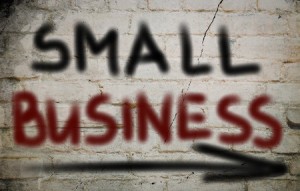
Copyright: / 123RF Stock Photo
Small business is a very broad term that covers a lot of very different kinds of businesses. Even the term small business has multiple definitions. Some define it as any business with fewer than 500 employees. Some define it as any business with less than $25 million in gross revenue. Some use a combination of these factors. That covers a lot of ground. So when people talk about advice for small businesses it’s important to know what kind of small business they are talking about.
So what kind of small business are you? There was a recent Harvard Business Review article that talked about the 4 types of small businesses. The article was specifically talking about public policy and how each differed in terms of the jobs they created and why each segment was a critical component of the economy. But these classifications helps make it clear that “advice for small business” really isn’t as easy as that. It matters what type you are, and your goals and plans. The 4 types were:
- Non-employee Businesses – sole proprietorships
- Main Street – local businesses serving consumers and other local businesses
- Suppliers – suppliers to other businesses (B2B) in the trade sector
- High-growth – Fast-growing, innovation-driven businesses
There can be some cross over of categories. But what is most important is that they all have different priorities and therefore different strategies.
The first three are the most similar for building a financial strategy. But the last one is the one that you read the most about. And people give the most advice about……which is completely different than the other three. It is easy to get confused. If you are looking to build a high-growth business, you will be very focused on raising capital to fund that growth. While the other three could likely be bootstrapped.
One of the big differences is that the last one is often trying to build something to sell. And looking for the big hit at the end. It’s main focus is getting bigger, fast…often at the expense of profits.
But if you are running one of the other three, the strategy is often very different. If you are the sole employee, getting a big buyout is very unlikely. The business relies on you to deliver the service.
The main street and supplier type business, if sold, will typically be sold at a multiple of profits and owner’s pay, plus assets. So growing bigger without having profits makes the business very unattractive to buyers.
My blog is written primarily for the first three kinds of businesses. The emphasis that I have is to build a business that generates sufficient cash flow to provide the owners with a market based salary (for any work they do in the business) and healthy profits (a reward for taking ownership risk).
Using a high growth strategy when you are really building a main street business sets you up for disappointment. If you are doing everything for a buyout in the end, you need to focus on profits, not just growth. It’s like the difference between buying a house that you intend to use as rental income for the long term vs. flipping it for a profit. Two different models that require different strategies.
What kind of small business are you?
Comments
Share this Post

